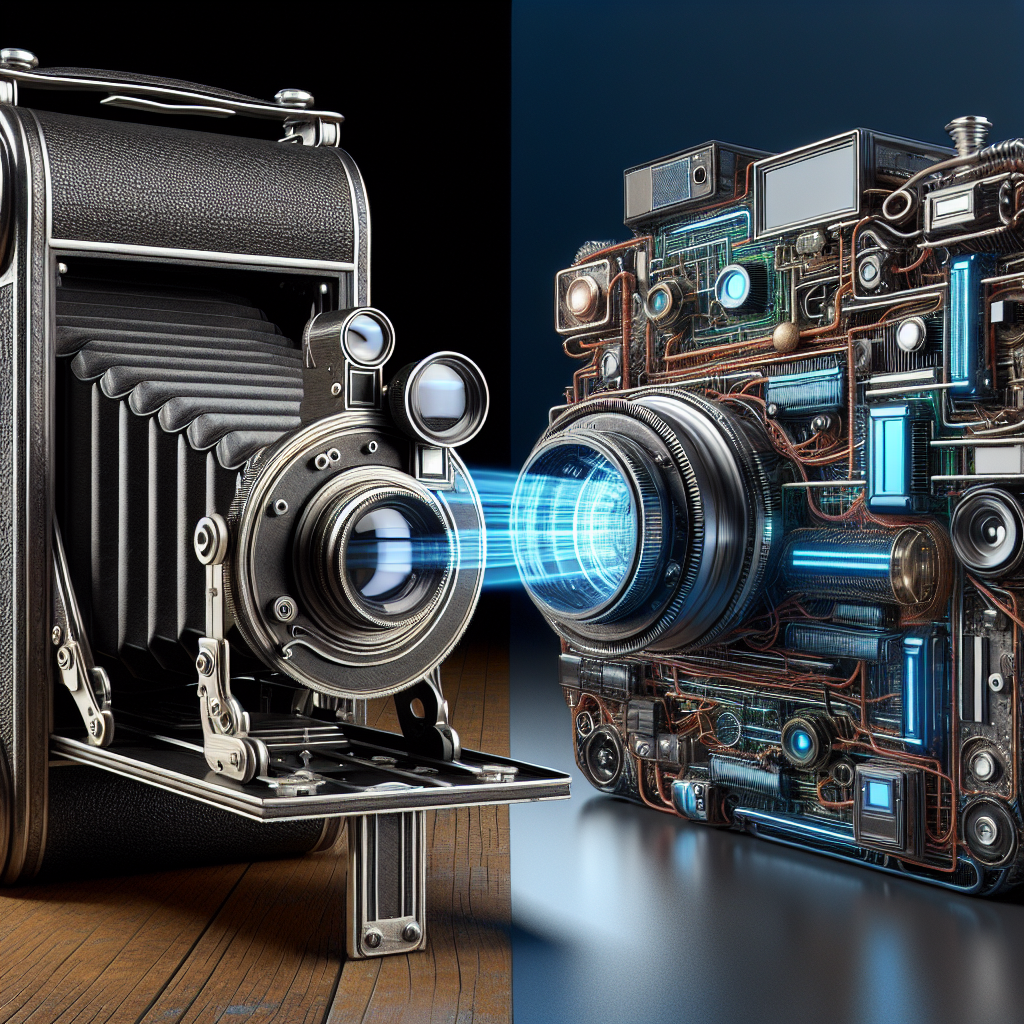AI-Powered Photography: Is Computational Photography Replacing Traditional Lenses?
Introduction
In the realm of photography, a significant transformation is underway, driven by the advent of artificial intelligence (AI). This shift, known as computational photography, leverages AI and software algorithms to enhance or even replace traditional optical processes. Unlike conventional photography, which relies heavily on the physical properties of lenses and camera sensors, computational photography manipulates images digitally, allowing for improvements in image quality, the ability to capture images in low light, and the creation of complex photographic effects that were previously only possible with professional-grade equipment. As smartphones and other devices increasingly adopt these technologies, questions arise about the future role of traditional lenses and whether they may be rendered obsolete by these advanced digital techniques.
Is Computational Photography Replacing Traditional Lenses?
AI-Powered Photography: Is Computational Photography Replacing Traditional Lenses?
In the realm of photography, a seismic shift is occurring, one that is reshaping how images are captured, processed, and even conceptualized. This transformation is largely driven by the advent of computational photography, a method that leverages artificial intelligence (AI) and software algorithms to enhance or even replace the traditional optical processes. As this technology advances, it prompts a pertinent question: Is computational photography poised to replace traditional lenses?
Traditional photography relies heavily on the physical properties of lenses to capture light and project it onto film or a digital sensor. The quality of the image is intrinsically linked to the lens’s optical clarity and the photographer’s skill in manipulating focus, exposure, and composition. However, the digital age has ushered in new possibilities. Computational photography, at its core, uses digital computation to surpass the limitations of traditional hardware. It combines multiple images or data points from an array of sensors to create a single photograph, optimizing and enhancing it in ways that were previously unimaginable.
One of the most compelling aspects of computational photography is its ability to improve image quality in challenging lighting conditions. Through techniques such as HDR (High Dynamic Range) imaging and night mode, smartphones and digital cameras can now capture details that would be lost with conventional camera setups. These modes automatically adjust exposure and contrast, pulling details from shadows and highlights to create balanced, vivid images. This capability not only simplifies the photographic process but also opens up new avenues for creativity without the need for bulky equipment.
Moreover, computational photography excels in convenience and accessibility. Modern smartphones, equipped with AI-driven cameras, offer users the power to capture high-quality photos without the steep learning curve associated with traditional photography. Features like portrait mode, which uses AI to simulate depth of field effects, allow amateur photographers to achieve professional-looking results with a simple tap. The technology is not just limited to high-end devices; it is becoming ubiquitous, further democratizing photography.
However, despite these advancements, the role of traditional lenses and the art of photography remain irreplaceable in certain contexts. Professional photographers, for instance, may prefer traditional cameras for their greater control over manual settings, allowing for a more intentional approach to image composition. The tactile feedback and the physical interaction with camera settings lead to a level of precision and artistic expression that computational photography cannot fully replicate.
Furthermore, traditional lenses offer a unique aesthetic that computational photography attempts to emulate but cannot always achieve authentically. The bokeh effect, for instance, produced by high-quality lenses, has a distinct visual appeal that software simulations struggle to match perfectly. Additionally, the resolution and detail captured by high-end traditional cameras continue to set a benchmark that computational methods are still striving to meet.
In conclusion, while computational photography is revolutionizing the field by making high-quality photography more accessible and versatile, it is not poised to completely replace traditional lenses. Instead, it serves as a complementary technology that enhances the photographic capabilities of a wide range of users. For professional photographers and enthusiasts who value the artistry and technical aspects of traditional photography, lenses will continue to hold significant value. As we move forward, the coexistence of both methodologies will likely enrich the photographic landscape, offering tools that cater to diverse needs and preferences.
Conclusion
In conclusion, AI-powered photography, through computational photography, is not entirely replacing traditional lenses but is significantly transforming the landscape of photography. Computational photography enhances the capabilities of cameras, particularly in smartphones, by using algorithms to improve image quality and offer features that are not possible with traditional optics alone. However, traditional lenses still hold a significant place, especially in professional and high-quality photography, where they are prized for their optical precision and quality. The coexistence of both technologies suggests a complementary relationship rather than a direct replacement, with each having distinct advantages that cater to different needs and preferences in the field of photography.



